The Bus Pirate 5XL and 6 are open-source hardware debugging tools respectively based on Raspberry Pi RP2350A and RP2350B and designed to simplify interaction with various bus protocols like 1-Wire, I2C, SPI, UART, several LEDs, and more. The idea is to send commands to a chip or sensor and get the response, without writing a single line of code making it ideal for hardware hacking and tinkering.
The devices feature buffered I/O pins with voltage and current measurement, a programmable power supply with current limiting, an RGB LCD for pin status and info, and an auxiliary header for connecting logic analyzers. All these features make this device useful for applications like debugging circuits, prototyping projects, and reverse engineering devices.
The new devices are updates to the Bus Pirate 5 based on Raspberry Pi RP2040 MCU. You’ll find Bus Pirate specifications for the three models in the table below.
| Feature | Bus Pirate 6 | Bus Pirate 5XL | Bus Pirate 5 |
|---|---|---|---|
| Cores | RP2350B ARM M33 x 2 | RP2350A ARM M33 x 2 | RP2040 ARM M0 x 2 |
| Speed | 133MHz | 133MHz | 125MHz |
| RAM | 512Kbytes | 512Kbytes | 264Kbytes |
| Flash | 128Mbits | 128Mbits | 128Mbits |
| PIO state machines | 12 | 12 | 8 |
| Flash storage | 1Gbit NAND (100MB usable) | 1Gbit NAND (100MB usable) | 1Gbit NAND (100MB usable) |
| Look behind buffer | 8 pins | - | - |
| Display | 320x240 IPS all-angle | 320x240 IPS all-angle | 320x240 IPS all-angle |
| IO pins | 8 @ 1.2-5.0volts | 8 @ 1.2-5.0volts | 8 @ 1.2-5.0volts |
| LEDs | 18 RGB LEDs | 18 RGB LEDs | 18 RGB LEDs |
| Pull-up resistors | All pins | All pins | All pins |
| Voltage measurement | All pins | All pins | All pins |
| Power supply | 1-5 volts | 1-5 volts | 1-5 volts |
| Current sense | 0-500mA | 0-500mA | 0-500mA |
| Programmable fuse | 0-500mA | 0-500mA | 0-500mA |
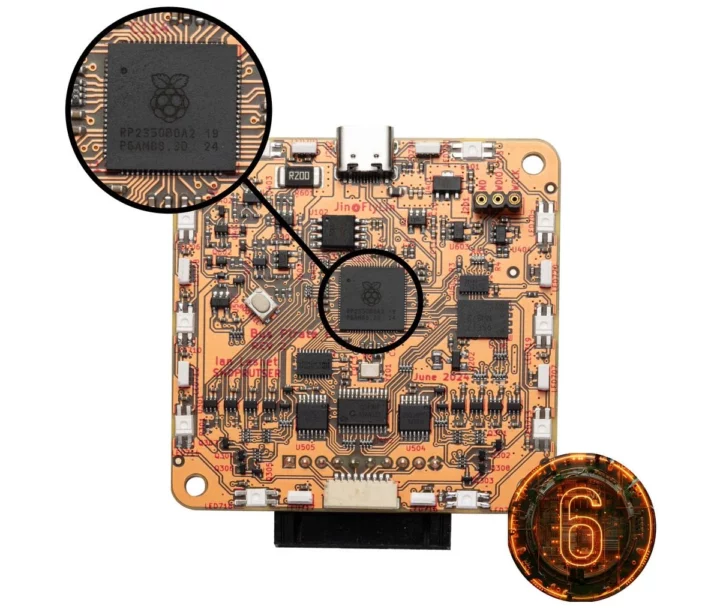
The original Bus Pirate was launched in 2008 and became a versatile tool for various bus types like 1-Wire, I2C, SPI, and UART. It offered features like traffic sniffing, frequency measurement, pulse generation, and automatic device identification, and could also be used as a low-speed logic analyzer. So, after this new release, the features are even more advanced and comprehensive.
The Bus Pirate 5, 5XL, and 6 models feature major updates including full-color LCD, and a Raspberry Pi RP2040/RP2350 MCU replacing the older 16MHz PIC24F. It also features PIO blocks used as a “magic peripheral” in place of the PIC’s Peripheral Pin Select capabilities. The terminal interface now emulates a VT100 color terminal with a live status bar. Additionally, it includes 18 RGB LEDs, eight I/O pins with 1.2V to 5V signal levels, analog voltage measurement, and 100MB of flash storage, surpassing the capabilities of the previous V3 model.
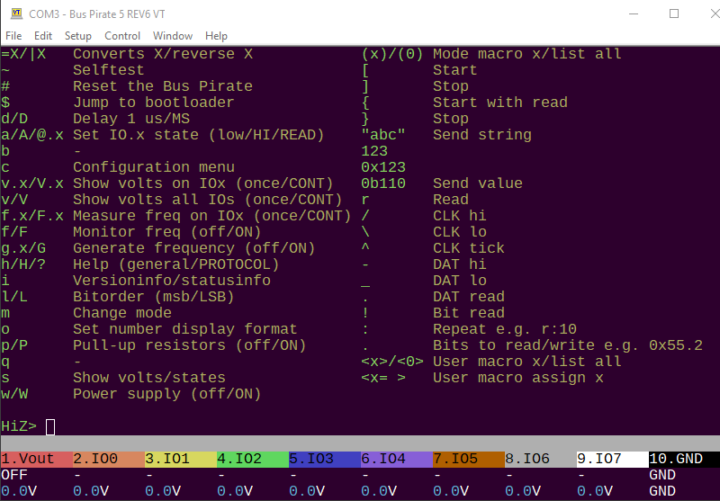
Commands are entered into a serial terminal. A new VT100 mode supports color text and a status toolbar that displays the function and voltage of each pin.
More information about the Dangerous Prototypes Bus Pirate 5, 5XL, and 6 can be found on the company hardware wiki page, additional hardware design files and firmware source code are available on the company’s GitHub page.
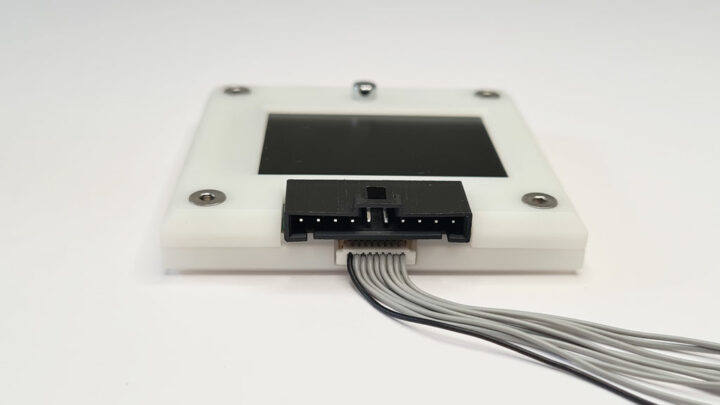
Previously we have written about similar hacking tools including the Flipper Zero, HackyPi, CanLite ESP32 board, and more feel free to check those out if you are interested in the topic.
The previous generation Bus Pirate 5 REV10 with enclosure can be purchased from DirtyPCBs for $42.50, and the new models are a bit more expensive at $63.50 for the RP2350A-based Bus Pirate 5XL and $82.50 for the Bus Pirate 6 using the larger RP2350B microcontroller.
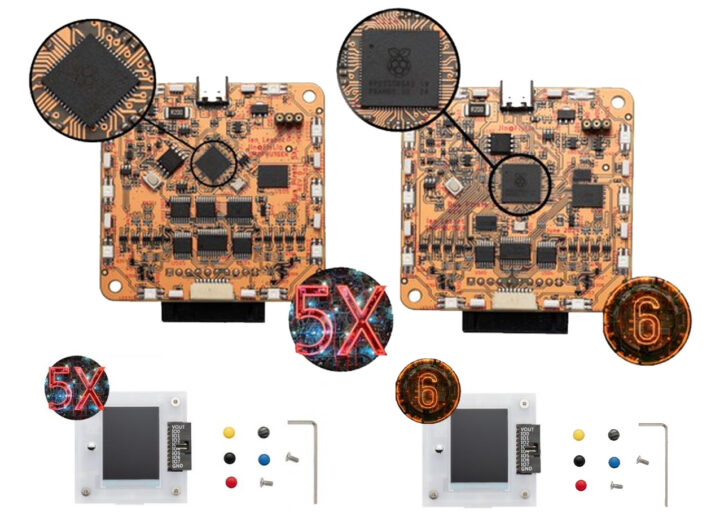

Sayantan Nandy, an electronics engineer with over four years of hands-on experience in PCB design, circuit development and power electronics, is proficient in EAGLE CAD, Ki-Cad, and Altium. He has a proven track record of delivering efficient and effective systems. His expertise extends from R&D, and prototyping to production support, making him a valuable asset to any engineering team.
Support CNX Software! Donate via cryptocurrencies, become a Patron on Patreon, or purchase goods on Amazon or Aliexpress


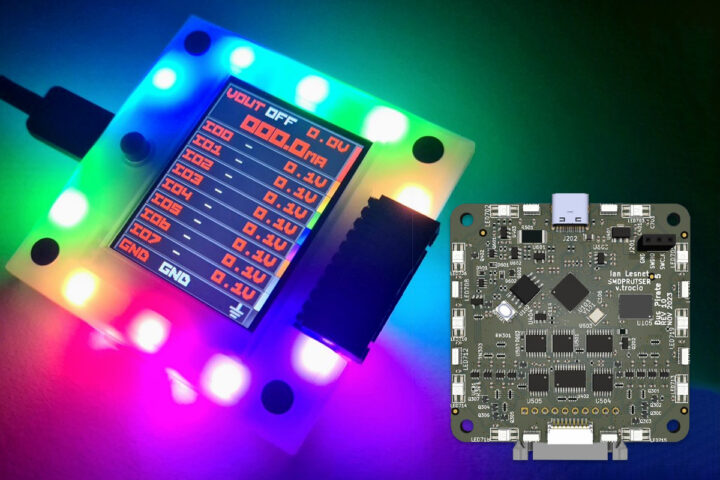



Given that the price difference between the chips are 0.40$ (RP2040 is 0.70$, RP2354B is $1.10), and given the fact that they managed to drop 2-3 buffer chips/IO expanders with the BP6, the price hike is crazy.
I would skip these.